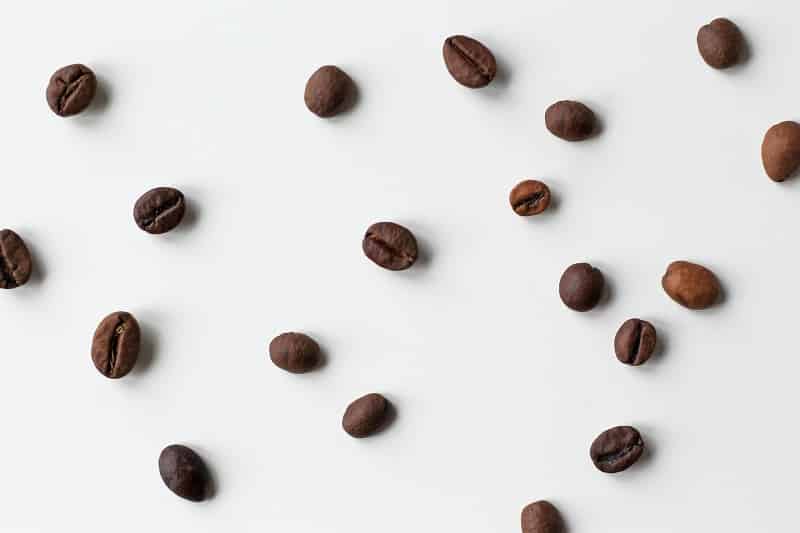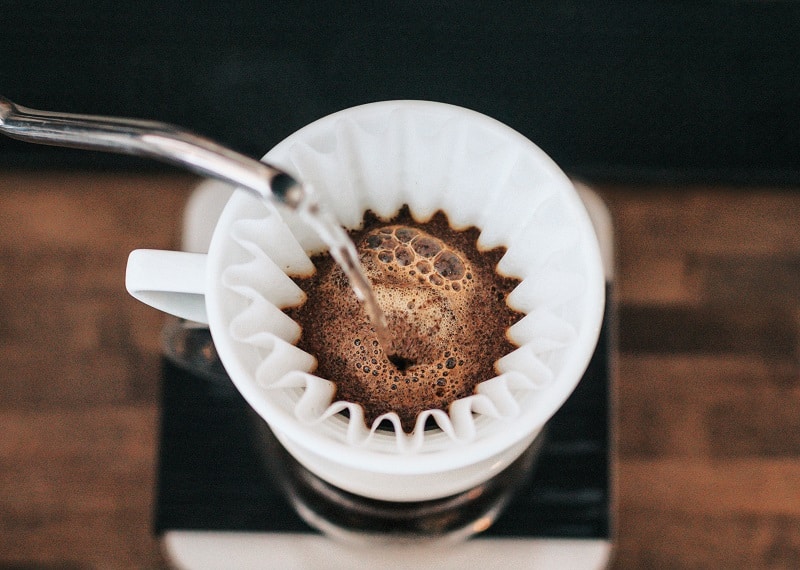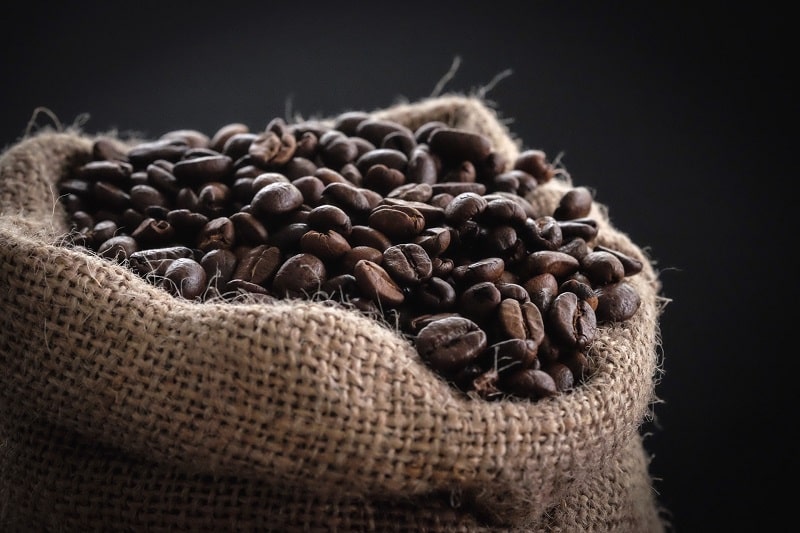Not all professional baristas, much less homebrewers, feel confident in choosing coffee beans for pour over coffee systems. We’re so dependent on using machines for making coffee that sometimes we forget how simple it is to make the perfect cuppa just using the pour-over method. This technique is very straightforward— all you need is a filter, a funnel, your favorite cup, and your coffee bean of choice.
Beyond that, it only involves 4 simple steps: boiling, grinding, dripping, and blooming.
If you’re not familiar with those terms, don’t worry; you can read this article for a great primer on how to use a pour over. It may at first seem confusing to do a pour over at home, but once you’ve chosen a brewing style, then comes the fun part (and the tasting!).
There are several different brewing techniques you can choose from to match your palate and improve your overall skill. Some of the most popular methods are the pour-over Coffee Cone, Stovetop Brewing, Aeropress, Chemex, Nel Drip, Clever, and many more. Your final consideration is the variety of beans to choose from— each one is a new potential favorite. Read along to discover the best pour over coffee beans.
Our Quick Picks
best coffee beans for a pour over

Why Are Coffee Beans Important?
Making a memorable cup of coffee requires only two components: the ideal brewing style and coffee beans you love. The brewing technique plays a huge role in the final taste and richness of your coffee, whether you want it to come off strong and bitter or light and smooth. Bear in mind that any brewing time difference can make a drastic change in the taste and mouthfeel of the final brew, so always keep an eye on the clock.
Aside from the style, the roast, grind, quality, and origin of the coffee beans can greatly affect the final flavor. In a quality coffee, starting from the unroasted green beans the coffee is carefully roasted to bring out the unique flavor profile of that origin. Contrary to popular belief, darker coffee beans don’t actually have more caffeine; it’s the other way around. But it is true that the darker the bean, the stronger the flavor, while some more complex aromas may be lost, so your choice of roast is important.
After that, the beans are basically in your hands. You should always buy coffee in whole bean form to maximize freshness. So once you get your beans home, decide what style of pour over you want to use in order to find your grind. For pour-over coffee beans, medium coarse to is the perfect grind.
The last thing we want to highlight is how the quality and origin of the coffee beans can make or break your brew. Where your coffee is grown is an essential element and plays a huge difference in the end product, so try to find a roastery whose sourcing ethics you trust.

Arabica vs. Robusta Coffee Beans
The two most common coffee bean types are Arabica and Robusta. Both have distinct characteristics that make them stand out from each other and from the less common varietals of coffee. Some of the other types of coffee beans you can try are Liberica, a famous variant in the Southeast Asian region for its strong and bold flavors. Another is Excelsa, a rare coffee type that has a unique earthy and aromatic taste that some coffee lovers might need some time to get used to.
The distinct attributes of the two most common coffee types stems from their origins. Arabica is known to be the first species of coffee, originating from Ethiopia, a place with high altitudes, rich soils, and natural diversity. Robusta is believed to originate from West Africa, a region which generally has a lower altitude, resulting in a stronger and more bitter flavor.
Arabica is famous because of its richer flavor diversity and smoother acidity. Its downsides include its lower caffeine content and higher price, both of which consumers are quick to notice. On the other hand, robusta is actually favored by some people, specifically those who prefer to get their caffeine kick from a stronger-flavored brew. Not only does it have a higher caffeine content, but it has a more bitter taste and aroma. Regardless of preference, both are perfect coffee beans for pour over.

Why You Shouldn’t Just Get Ethiopian Coffee
We have no hate for Arabica; it’s still our household’s coffee of choice. But if you’re newer to coffee you should not just stick with one type. Give some other origins a chance and explore the world of coffee outside of Ethiopian beans.
As mentioned above, coffee origin plays a vital role thanks to terroir, which is French for ‘flavor of place.’ Just like on grape plantations raised for wine production, terroir in coffee is basically the environmental factors that affect the flavor and complexity of the final beans. Such factors include soil type, climate, topography, and altitude.
Let’s consider the importance of altitude in growing the perfect coffee beans for pour overs and other brewing techniques. The higher altitude, generally the better the quality of the beans. Coffee grown at high altitude tends to ripen slower, and with slow ripening you tend to get overall better quality coffee beans. However, there’s a unique type of coffee that undergoes a different process, and it’s considered one of the most prized coffees in the world: the kopi luwak.
The coffee cherries used for the most famous origin of kopi luwak are from Indonesia. What makes these beans so unique is that right before they’re cleaned and dried, they are plucked directly from a civet’s feces. Yes, you read that right. The local civets are picky eaters and only choose the best coffee cherries, the seeds of which are fermented during digestion. Researchers believe that certain enzymes are secreted by these animals that make kopi luwak uniquely flavourful, but they haven’t yet been able to create a good imitation product for market.
Currently Brazil is the leading coffee producer in the world with over 40% of the world’s coffee production. This is due to both the country’s large size and its high altitude and tropical climate. Yet the country with the highest coffee consumption in the world is no other than Finland, one of the darkest countries in the world. This top spot is followed closely by its neighboring Scandinavian countries like Norway, Iceland, and Denmark. This group of countries has some of the strongest coffee culture— they even added the phrase “everything is better after coffee” into common usage.

How to Pick a Coffee Bean (See: Processing & Roast)
There are four general types of coffee beans that are common around the world— Arabica, Robusta, Liberica, and Excelsa. But there are also more rare and expensive beans available on the market these days, including Geisha, El Salvador, Black Ivory, Kopi Luwak, and more.
We know it can be overwhelming for new coffee enthusiasts to pick which coffee bean to buy so we’ve narrowed down the characteristics that you should look for.We already mentioned the importance of origin, grind, roast, and brewing technique. The other factors you must take into consideration are the processing method, choosing between blended and single origin beans, and the freshness of the coffee.
- Washed process coffees tend to have a stronger flavor with bright acidity.
- Natural process coffees develop a more intense aroma with a twist of wine-like undertones.
- Blended coffees are preferred by those who like their coffee with milk and are often used in espresso machines while single origins are for black coffee lovers.
- Resting coffee is a term used for the period that the coffee was grinded, the more rest the coffee gets, the more likely it is to lose its flavor. So, freshly ground coffee is always the best.

3 Best Coffee Beans For Pour Over
If you’re looking for the best coffee beans for pour over technique, here are three products from brands worth trying.
Starbucks Dark Roast Whole Bean Coffee – Sumatra
Sumatra is a large island in Indonesia, and this single-origin blend has a rich and bold taste loved by many. What makes it perfect for pour-overs is its special bloom that brings out its smooth mouthfeel and lingering aroma. This happens when carbon dioxide is released and bubbles appears as the hot water comes in contact with the coffee grounds Since it is a dark roast, it’s less acidic than most coffees but still not overly bitter.
When coffee grounds come in contact with hot water, they release carbon dioxide and often bubble and expand.
Counter Culture – Big Trouble Whole Bean Coffee
This is my personal favorite in this collection because of its nutty, chocolatey, and caramel-like flavor. This is a versatile bean that can be enjoyed either plain or with milk. It’s a medium roast bean, giving the right balance between coffee flavor and acidity.
Stump Town – Hair Bender Whole Bean Coffee
Stumptown’s Hair Bender has a deep, complex, and very rich taste. We couldn’t agree more with the many Best Of lists and forums which have named this one of the best espresso roasts. When you want a coffee with notes of toffee, fudge, and fruits, this is the one for you.
Hopefully we were able to help you make the best choice of coffee beans for a pour over. Have you picked a favorite?
